MAANKH I:
Finding God the Afro-American Spiritual Way, by Honoring the Ancestors and Guardian Spirits. (Volume I)
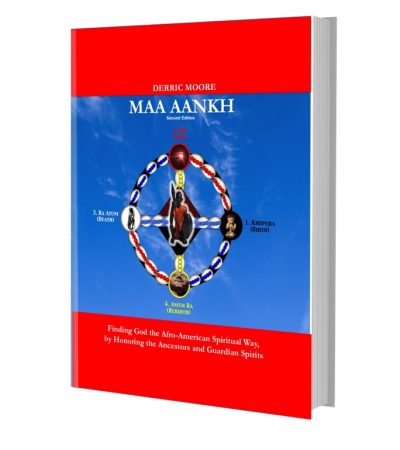
Buy it today at Amazon.com, Goodreads or purchase as a bundle at 1 SoL Alliance.com
Book Review:
The Maa Aank is a powerful Kamitic symbol that has been annexed with the ancient Bantu Kosmogram as taught by Dr.Fu Kiau Benseke, which is the basis for metaphysics across the board, including alchemy, cosmology, human evolution and psychological science.
Source: The Orb of Djenra – neohoodoo.blogspot.com
Book Review:
Maa Aankh by Derric Moore is like nothing you’ve read before. Memoir, History, Philosophy, Sociology, Jeremiad, Manifesto and Spiritual Quest, its all these and more. This is a Sacred Text that refuses to fit into preconceived boundaries. It is a Revelation. Not only that, it is a timely revelation. A book for our times and a book for the ages. Derric Moore has poured his heart and soul into this work. What makes it so profoundly rewarding is that it is a work of high concept told in an easily approached and digested voice. It s as if a friend were standing there talking to you. You find yourself immersed and by the end of this text, transformed. This work is magical, this work is real. The accessibility allows Derric Moore, in his manifestation as Rau Khu, to explore concepts that would otherwise be daunting to both the initiated and the lay reader. They will all enjoy reading this work; they will all find threads of illumination and wonder. If you don t buy but one book for your spiritual library this is it. His account of his spiritual quest is at the same time both familiar and unique. From his first stumbling steps in understanding through the lessons inherent in a crippling struggle with lupus to a full grown cosmology, the reader is taken on a journey that weaves the threads of his quest into a cosmic cloth. This is the work of an original thinker. It is a personal vision grounded in both Egyptian theology and Afrospiritual thought and practice but what makes this work special is a love for humanity that shines through every word. This is the real thing, timeless knowledge told through the struggle of a unique soul grown deep through both victories and defeats. It is difficult to acknowledge evolved souls in our lifetime, but in this work we see that each generation produces its own. So often works like this are pretentious and overwrought, written by souls and writers not up to the task. This work will satisfy the most demanding reader, the most accomplished seeker. This is the real thing. This is Sacred Literature.
Source: Arthur Flowers author of Mojo Rising: Confessions of a 21st Century Conjureman
Book Excerpt
Book excerpt from page 201 of Maa Aankh V1.
Discovering more Hidden Hands
That’s when it happened. While following the Spirit and allowing it to guide me, one day out of the blue I was led to look at my late grandmother’s obituary that had passed a year after meeting my wife.
My grandmother, my mother’s mother, the one that approved of my wife, was a strong and loving woman that was married to my grandfather for over 60 years, who passed away a year before her. My grandmother loved children and between her and my grandfather the two of them they had nine children, two adopted children and not to mention the children that would come to the house from their church or the neighborhood to play with their own. People loved my grandparents because they were God-fearing, hardworking people that established a standard based upon the old ways. It was because of this standard they were both looked upon and treated in our family as royalty. To give you an example, unless they were participating in a conversation, when they spoke everyone literally was quiet. This is how all the elders in our family were treated. Another thing that I noticed about my family because of my grandparents is that we didn’t have a large number of divorces and infidelity issues, because there was something that my grandparents instilled within their children and grandchildren that for the most part curtailed that behavior.
Now, there were a lot of traditions that my family practiced and were passed down to succeeding generations, which I later learned were not created by them. Some of these traditions were created or at least given to my grandparents from my great-grandparents, whom I had the pleasure of meeting before they passed. But there were a lot of other cultural traditions that were in practiced before them and clearly came from someone else I had never known.
Both of my grandparents lived good full lives. Then, my grandfather passed away, and a year later my grandmother followed. Both my grandparents were well loved and when she passed away people from all over the state of Michigan (and country) came to pay their respect. Unlike most funerals that I attended (especially where the deceased dies at a young age), my grandmother’s funeral was not a somber event full of gloom, but a jovial event. The choir tried to sing somber and soothing gospel songs to comfort the family and guests, but the tempo would always change and it would turn into a spiritual party. This explains the reason why it wasn’t even called a funeral but a “home going celebration”.
As I looked at the photo of her on the obituary and began thinking about some of the experiences I shared with her, I noticed that beneath my grandmother’s photo it read ‘Sunrise: (Her birth date) and Sunset: (The day of her death)’.
Now, I had looked at this obituary several times before, but I never noticed that it said that. That’s when a familiar voice that I hadn’t heard for years spoke to me and revealed that if a person outside of our culture saw this obituary they would jump to the conclusion that we black folks were worshipping the sun.
I am not sure if my grandmother’s spirit was the one that showed me this or not, but the fact that I had a fond memory of her and was directed to her obituary continued to verify for me the old African belief that our loved ones are not dead but continue to exist as spirits. As spirits or ancestral spirits, they still take an interest in the lives of their descendants that they left behind. I imagined my grandmother smiling and looking at me over my shoulders, which verified to me that my grandmother was definitely an aakhu (ancestral spirit guide) that was watching over me.
At that moment, things began to instantly clear up, because I began to see the common misconception held and publicized by Egyptologists, archeologists and all other authors that claimed that the ancient Kamitic people worshipped the sun. Simply put, these western scholars just didn’t know how to interpret what our people did because it was and still is a foreign concept to most of them.
The equating of one’s life to the sun was not something that the people in the church my grandparents attended created. It was created thousands of years ago. The concept that most Afro-Americans are familiar with, I learned, came from the Kongo-Angolan region during slavery, and was called the Yowa Cross.
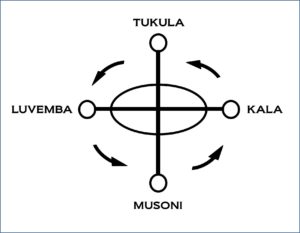
The Yowa Cross, also called the Dikenga, Tendwa Nza Kongo and the Kongo Cross, according to Robert Farris Thompson, author of Flash of the Spirit: African and Afro-American Art and Philosophy, was a simple diagram predating Christianity that showed the evolution of the soul. The horizontal line of the cross is believed to be the dividing line between the mountain of the living (above) and their polar opposite the mountain of the dead (below). The mountain of the living is called ntoto (earth) and the mountain of the dead is called mpemba (white clay), which is believed to be resting under the body of water symbolized as the horizontal line called kalunga. In fact, in some interpretations the whole bottom half of the cosmogram is referred to as kalunga to signify that the land of the dead is complete, whole, in regards to understanding the both sides in the cycle of life.
The discs surrounding the Kongo cosmogram (from right to left) are the sunrise, midday, sunset and midnight (when the sun is believed to be shining on the other side) and the four stages of life –birth, growth, death and rebirth, thus indicating the Kongo belief that the righteous will never truly die but will be reborn like the sun, either in the body or name of their descendant or as an everlasting spirit of nature called a simbi, which I learned from Papá Raúl is the equivalent to a Christian saint.
Then I began to remember that in the Story of RA and Oset, when RA was asked what his true name is, he responded by saying,”I have a multitude of names and a multitude of forms”. In this response, I noticed that the ancient Kamitic people used the word “RA” as a prefix and suffix to create words, names and places like Auf RA, RA-Ptah, KhafRA, MenkauRA, Asr RA, Khnemu-RA, similarly to the way the ancient Hebrews used the word “el” to create words, names and places like EL-Shaddai, EL-ohim, EL-Olam, ang-EL, Rapha-EL, Micha-EL, Gabri-EL, and Isra-EL (Israel).
When I looked up the word/name “el”, I found that it roughly translates to mean “might, strength, action, work and power” and was used to signify the true God of Israel. Exactly like the ancient Kamitic word “RA”, which means “To do, act, action, power, the act of working, etc.” and was made into a pronoun to become RA. When I found that the Ancient Semitic name EL-Ro’I or El Rohi (The God of Seeing –meaning we rely upon God to help us to humble ourselves by allowing us to see our faults and weaknesses because God is our shepherd) was phonetically and etymologically simlilar to RA, that’s when I realized that the ancient Hebrews borrowed this concept and practice of using El as a prefix and suffix from the ancient Kamitic people, because the latter were older and had a far longer history of using this exercise. This meant that the Hebrew El was the Kamitic version of RA.
That’s when it became crystal clear that, if I was able to see this connection, I am sure that archeologists, Egyptologists and other Western scholars, including theologians, could have found this as well, and either they chose to ignore it, or totally disregarded it in order to continue to perpetuate the myth that the ancient Kamitic people (and all people of color) worshipped deities, idols, animals and other things like the sun.
Then I remembered the various testimonies that were given at the church of my youth. The people that testified made claims of how they were able to accomplish miraculous things because of the power of the Holy Ghost that they had within them. The Holy Ghost, which they claimed is “like fire shut up in their bones”, gave them, according to Galatians 5:22-23, “…joy, peace, patience, kindness, goodness, faithfulness, gentleness and self-control”. Other gifts of the Holy Spirit I remember were generosity, modesty, and chastity. As well as the ability to exorcise evil spirits, see angels/demons, perform miracles and speak in tongues.
Now, in one part of the Story of RA and Oset, RA states that he is “KhepeRA in the morning, RA at noon and Tmu (RA Atum) in the evening”, but he still hadn’t told Oset his name. When RA finally reveals his hidden name to Oset he steps out and allows this name to pass from him to her, which causes the dying RA to be renewed. The hidden name of RA was cleverly weaved into the story to mean Amun RA –The Hidden RA. That’s when I began to see the complexity in using RA as a symbol. RA was symbolized as the sun to symbolize that God’s Consciousness is eternal and cannot be created nor destroyed. Yet at the same time RA was understood to be a powerful force. A similar problem existed in the church, which is why there are so many a denominations arguing over whose doctrine is right or wrong. Was it Jesus Only, Jesus and the Trinity, the Trinity, the Father, Son and Holy Ghost…? No one knows, I was shown, because God is an Infinite Spirit and it is difficult to define and describe something (for a lack of better words) that you cannot physically see. This is the same problem the Kamau had. They couldn’t properly define and describe God because they understood the human perception of things was extremely limited. The Kamau understood, it seems, that the only way to define and describe God is based upon inesperience, which is why they used so many stories with allusion and puns, in order to get the listener or reader to delve deeper within.
When I thought about how God cannot be physically seen and compared this to my personal experiences, it made sense why the Kamau had so many different names for God. These names of God weren’t labels but words meant to describe and somewhat define who God is. The reason there were so many names is because no one can properly define who and what God is. No one can put God in a box. It just cannot be done. It is like trying to put the ocean in a box. So, to clarify matters, God, the Supreme Being, was called in the Kamitic language Nebertcher, which means Lord of Everything.
It’s understood that it is the Spirit of God that has the ability to change an individual’s life, because the Spirit of God is an awesome Power. This is why Oset wanted to know the name of God: so that she could be changed from a mere mortal to a divine being. It is the same reason why people in the church seek the Holy Ghost, so that they can overcome their earthly problems through spiritual means. It is the same reason why I sought the Holy Ghost when I was a teen. This all led me to see that there were two RAs that existed in the story. There were the RA talking to Oset that journeyed through the two regions, and the RA that exists at midday, according to the Story of RA and Oset. This explained why RA was described as being strong, mighty and powerful at noonday, yet feeble and old like an old man that could be tricked. If God is omnipotent, omniscient and omnipresent, clearly God cannot be tricked because this would contradict who and what God really is. Not to mention the fact that God already knew that someone was trying to trick him. Clearly RA is not Nebertcher. It is an aspect and attribute of God.
The RA talking to Oset, it came to me, corresponded to the Consciousness of God. According to Kamitic thought, in the beginning God didn’t exist but had to self-create Itself[1] because the earth (and everything that existed) was without form, because there was a great void (Genesis 1:2). When RA states to Oset that he is KhepeRA, RA and Tmu (or RA Atum), it is understood that the hidden name is Amun RA. It became clear to me that these were all allusions to the fact that God is always Aware, Alert and Conscious, because God’s Consciousness is always coming into being and transforming like the sun. This meant to me that:
[1] God is androgynous in African thought consisting of both the active masculine energies and receptive feminine energies.
KHEPERA is the “Coming into existence (RA)” and is associated with the scarab beetle. Since the scarab beetles lay their eggs in dung balls (a symbol of nothing or no-form) and roll them into holes where they were buried, after which the larvae would be born, this was seen by the Kamitians as a sign of birth, resurrection and renewal out of nothing. KHEPERA symbolizes the creative powers and consciousness of the God. It is associated with the rising sun, lower life, plants and newborns.
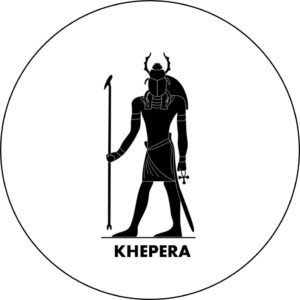
RA is the one that was often portrayed as a youthful man with a falcon head. Living in the country allowed me to see that many falcons and hawks usually hunt their prey from high perches or while hovering in the air, and, most of the time, at dawn or dusk, when prey is most active. The Kamitians apparently saw RA as one that sees everything from beginning to end, so they sometimes called him RA- HruKhuti –RA the Hru of the Horizon.
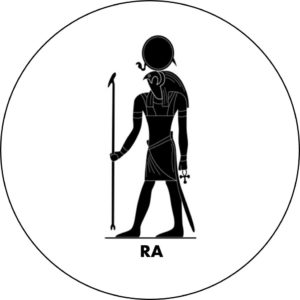
The word “RA” also means “ruler”. RA, therefore, symbolizes the aggressive aspects of the God’s Power and consciousness that is used to stand upright and fight the enemy, associated with the midday sun, seen as young adulthood to adulthood/maturity, also an individual of authority.
RA ATUM (also called RA Tum or Atum RA) means “The Complete RA.” RA Atum symbolizes the transformative powers of the God’s Power to make one stronger and wiser spiritually (especially after tests, trials, and tribulations), thus RA Atum is
portrayed as an old man wearing the double crown of Kamit indicating the beginning of the end. As such he is symbolized as the setting sun.
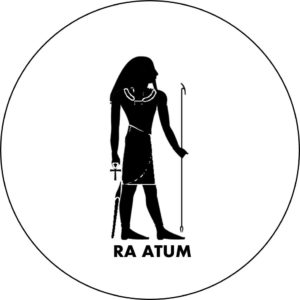
AMUN RA means “The Hidden RA” and is portrayed as a victorious man wearing a crown of plumes, ususally either sitting or standing. In Kush (Ancient Nubia) Amun RA was often portrayed as a mountainous ram. This is because the spiraling of the ram’s horn[1] indicates that Amun RA symbolizes the rejuvenating, renewal, purifying, rebirthing, reviving, reforming miraculous and prophetic aspects of the God’s Power, that are a complete mystery to humankind.
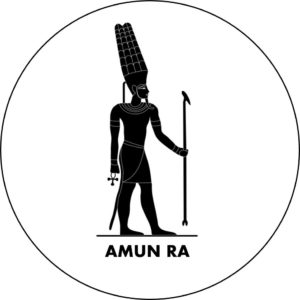
Amun RA is the most profound mystery in the universe, associated with the hidden moon and the mysteries of rebirth. This is why the Kamitians credited Amun RA with their victory in the expulsion of the Hyksos.
The RA that could be tricked and manipulated is the Power or Spirit of God because it is an indescribable force. This force could not only be tricked but the forces of evil often attacked RA, according to Kamitic legend, as well. This clearly indicates that the Kamau were speaking metaphorically when talking about RA and that he is not God nor is he the sun. Again, when I compared this to my life, I remembered when hanging out with the Rastas when I was attending school, they would drum and get a spiritual feeling called “irie”. This “irie” feeling is what people in the church called the “annoininting”. When a singer in the church sung with the annoininting, like when the great Mahalia Jackson sung How I Got Over (live), she touched the hearts of all people. This is because the Power or Spirit of God can be manipulated through singing, music, drumming, dancing, breathing, etc. It is what the Chinese called Chi energy because it exists throughout the universe, but I am reminded through my experience that it could be lost. Funny, I remember my parents saying when they became angry with us boys that “You almost made me say something.” Meaning, there was something within that helped them to refrain from saying, acting and behaving like “saved” people or saints. On other occasions I have heard other people’s parents say, “You ‘bout to make me lose my Holy Ghost.” I could never understand how or what would make them lose their Holy Ghost because I didn’t understand really how they got it in the first place, but it was all starting to make a lot more sense now, through studying the Kamitic tradition.
For this reason I was instructed to spell the RA that could be tricked with a “u” at the end, to distinguish between these two RAs. RA ending with a ‘u’ pluralizes RA to spell Rau, to indicate that it is a force or is the Power and Spirit of God. This form of RA, symbolized as the encircling serpent by the Kamau, corresponded to the radiant, fiery energy that is said to be like fire in one’s bones according to Christian lore. This is another reference made in the story that RA’s body trembled and quaked. I could see now how some equated RA with the Yoruba orishá Aganyu –the spirit of volcanoes, but the Spirit informed me that I still wasn’t seeing the whole picture.
So, I was inspired to put the four forms of RA together based upon their association with the sun, along with the ancient Kamitic theory of the universe, and compare it with the Yowa Cross. After doing so, I discovered the following cosmogram, which I was told is called the Maa Aankh.
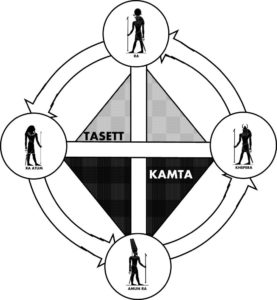
Book excerpt from page 213 of the Maa Aankh V1.
The Maa Aankh
Immediately, when the word the maa aankh came to me, I looked up in my An Egyptian Hieroglyphic Dictionary Vol. I and II and found that it was not a Kamitic word, but a word coined using the Kamitic language. The word maa aankh was composed of the ancient Kamitic word “maa”, which means to be true, to be upright, truthful, real, actual and veritable, and the word “aankh”, that means eternal life, to live and to swear an oath. Literally it meant to balance an oath, swear to live truth, to live by law/order, which roughly means, “To swear an oath to live upright, truthful and veritable.” I was later told that one that followed this path was called a sa (t)’ maa aankh, which means son (or daughter) of the one that swears to live truth.
The maa aankh, I was told, simply put, is the name of a cosmological system that was given to me by the Spirit of God and my ancestors. The purpose of the maa aankh was not to resurrect, recreate or reconstruct the Kamitic religion of old for contemporary times. The purpose of the maa aankh, simply put, was to help me to see God in the universe, others, and most importantly see God in me, because it was explained to me that what separates us from God is what we believe and see. The maa aankh, I could see, was inspired and similar to the Kongo Cross, but I was shown that it was different, because it is based upon the Kamitic concepts and principles expressed in the Story of RA and Oset.
I was shown that, even though no diagram has been found indicating that the Kamitic people lived their life based upon such a system, there are all sorts of clues that reveal that their life was influenced by something closely similar. I was shown that the maa aankh was created based upon the understanding that ancient Kamit (Ancient Egypt) became a very powerful, peaceful and prosperous nation in ancient times because the people united and worked together to take advantage of the north-flowing Nile River, which flooded annually, providing near the southern section very fertile soil. This allowed the Kamitic people to cultivate crops and grains from the very fertile soil, thus giving rise to agriculture, trade and a very stable economy. With no concerns or worries about their survival, because their immediate needs were provided for through the annual inundation of the Nile, surrounded by a sea of desert on all sides making their lands for the most part difficult (not impossible) for foreign invasion, the ancient Kamites turned their sights inwards and began to ponder about the mysteries of the universe and how it related to human kind.
Through their self-exploration they made numerous discoveries that led to them unraveling the mysteries of life. This also allowed them to put into practice numerous customs and laws that appeared to be very bizarre and strange to ancient foreigners during that time, such as allowing people from lower social classes to advance to higher social status based upon morals and ethics, giving women rights similar to that of men such as the right to own land, get a divorce and even enter into the priesthood, a feat contemporary religious organizations are still struggling with to this day. This is how their society functioned for hundreds of years undisturbed[1], until foreign invaders from the north finally stalled and halted their progress.
The ancient Kamitic way of life began one day after noticing that the sun seemed to rise in the east, peak at midday, set in the evening and was mysteriously reborn to start a new day. It was during these times that it appeared to the ancient dwellers along the Nile that the energy of everything around seemed to correspond with the different movements of the sun as well. At sunrise it appeared that everything came alive or awake. Then, at midday, everything (plants, animals and human beings) was all bustling with life. When the sun began to set, it appeared to them that all of the creatures on the earth –human beings included– slowed and winded down as the stillness of the night set in. Then everything would start all over again the next day and so on.
This observation inspired them to associate sunrise with the emerging scarab beetle that comes out of the dark hole and called it KhepeRA. Since at midday everything seemed to be aware, alert and conscientious, they saw it as being like a bird of prey and called this moment RA. As they approached the end of the day and life seemed to slow down or come to a halt, they saw this as being like a human being aging and called it RA Atum. They didn’t understand how it was done but they knew that somehow things were reborn and renewed through a mysterious
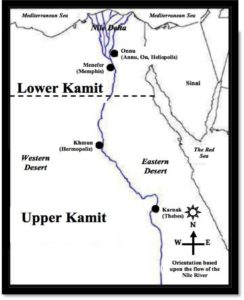
process that they associated with the stillness of the night, and so they called this particular moment Amun RA. As their understanding of life expanded so did their view of the universe around them. Until eventually KhepeRA (sunrise) meant Birth/Beginning, RA (midday) meant Life, RA Atum (sunset) was associated with the Death and Amun RA (midnight) indicated Rebirth. Together these four forms governed their country that was divided into two great lands, known as TASETT and KAMTA.

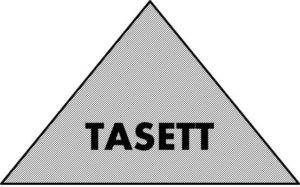
TASETT, which means The Red Lands, is the northern section of the country, where the Nile flowed through the desert until finally branching out to the Mediterranean, which was also known as Lower Egypt and was represented by the red crown called the Deshret.
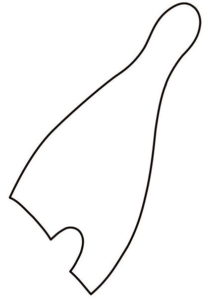
KAMTA – The Black Lands
of Upper Kamit
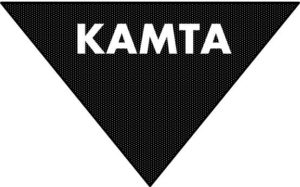
KAMTA, which means The Black Lands, is the southern section of the country, where the Nile flowed and produced rich, fertile, and black soil. It was a white crown called the Hedjet that represented this region, also known as Upper Egypt or Upper Kamit.
Now, in my research, I noticed that most scholars don’t comment as to why the Kamitic visionaries chose to symbolize TASETT (the Red Lands) with a red crown and KAMTA (the Black Lands) with a white crown instead of a black crown, because many are still in denial that the ancient Kamitic people were black and brown-skinned Africans. When it is accepted that the ancient Kamitic people were black and brown Africans and had similar cultural practices, traditions, etc. as other Africans especially those found throughout Sub-Sahara Africa, it can be assumed that according to ancient African color symbolism the color red symbolizes fire, anger, life, mediation, etc. The color black symbolizes mystery, the unknown, the hidden, etc. and the color white symbolizes knowledge, wisdom, purity, death, peace, and the honorable dead or ancestors.
This means from a metaphorical perspective TASETT, the Red Lands, symbolizes the land of the living, the physical realm, and exemplifies how the physical realm is truly barren and lifeless, like a desert full of mirages and illusions of grandeur at high noon. TASETT is a dangerous land. It is where most of the foreign invaders resided and brought chaos. It is the realm of storms, the land of harsh winds, the valley, the realm, according to occultists, where Satanel (Satan) established his kingdom and where the tree of good and evil resides. In other words, it is the physical hell, and for this reason, Set[1] was said to be the ruler of this land.
KAMTA, the Black Lands, on the other hand, symbolized the land of the spirits, the spiritual realm, and exemplifies the fertile and mysterious phenomenon of rebirth at midnight. KAMTA was the relatively safe land that provided peace, security, shelter and stability, the further inland one ventured. The further south the ancient Kamites traveled led them to discover their ancestral roots that dwelled beyond their borders in ancient Ethiopia. KAMTA thereby became the home of the greatest Kamitic ancestor Osar[2] and thus the origin of their beginning. It is here in the south, where the tree of life and everything associated with purity resides[3]. It is the allusion of heaven, which is the land governed mysteriously by a cosmic order.
Clearly it was the Nile River that separated Upper Kamit from Lower Kamit and made these two lands distinct, unique polar opposites of one another. It was therefore imagined that these two lands, symbolized by two opposing crowns (the red and white crown) and ruled by two opposing brothers, had to have come from the same source. So, the horizontal dividing line I was shown on the maa aankh symbolizes the Nile River but metaphorically is called Nyun (Nu, Nun), the sacred, primeval waters of the beginning, the sacred lake, pool, the cosmic slop, the great void, that mirrors that which is above below. Just like the Kongo-Angolan cross, from some viewpoints the whole bottom half of the maa aankh can be interpreted as Nyun, to indicate that the entire bottom half of the maa aankh is a pure, sacred, hidden and a mysterious sea of nothingness. From this perspective, it becomes easy to see that the amniotic fluid of the female womb[4] can be said to be a physical manifestation[5] of Nyu. We, therefore, all come from the sea of a great beginning.
The vertical line on the maa aankh represents the first principle that was created by Nebertcher, the Maa, which brings the two great lands together and unites Amun RA below with its polar opposite RA above. It connects the land of the living with the land of the dead making it possible for one to bridge the gap of the great divide. Maa, therefore, allows one to see the whole picture by connecting the Right Eye of RA with the Left Eye of RA proving as the saying goes, “Two eyes see better than one” [6]. The Maa is what provides the balance, law and order or foundation for Shu and Tefnut.
Shu and Tefnut are called in the ancient Kamitic writings the first divine siblings and/or the first divine couple to come into existence after the Maa. This is because that Maa ensures everything its time in the sun so that for every cause there’s an effect. Everything that rises will eventually fall, etc. Shu, therefore, is the Kamitic Yang –responsible for heat, fire, light, cause, rational, positive, action, etc. He is interdependent upon his polar opposite sister-wife Tefnut who is the Kamitic Yin –responsible for coolness, water, darkness, effect, intuitive, negative, reaction, etc.
It is important to understand that failure to recognize that Shu and Tefnut symbolize the dual aspects in nature has led to the chauvinistic attitude that women are the weaker of the sexes and in many western religions the source of evil. On the flip side, in response to male chauvinistic attitudes, feminists have tried to portray the feminine principle as being more dominant and powerful than its polar opposite. Both concepts are incorrect according to ancient African thinking. Neither is stronger, better, or weaker than the other. Both are dependent upon the other and the reason we label things this way is to try and understand the nature of God. In reality, when it is understood that both symbolize the dual aspect of nature and that both are dependent upon the other for its survival, it should become clear that without one the other would cease to exist and vice versa. For instance, without the female species being able to carry the egg, the male species would not have an egg to fertilize. This was the logic and wisdom of the ancient Africans that led to women having similar rights as men in traditional African society. This is the reason the ancient Kamitic philosophers indicated that first Shu and then Tefnut emerged after the Maa –balance, reciprocity, etc. In some of the legends, it is believed that Shu and Tefnut were so close together that they were emitted as twins. Still one has to come after the other. There has to be a cause, in order to be an effect.
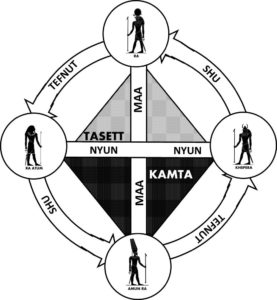
That being said, the African queen was not just arbitrarily given the title queen mother and wined and dined, as we see in fairytales and storybooks. She was considered the mother of a nation because of her duties and responsibilities to the people. An analysis of the great African civilizations reveals that many of these societies were based upon matrilineality, where the women hold very important roles in the community. This is not the same as feminism and does not mean that men do not hold important roles in such a society. What it means as Papá Raúl once explained to me is that greater emphasis is placed upon the maternal line versus the paternal line. Papá Raúl told me that some spiritual societies in Cuba still function this way, which is why my aakhu introduced Oset to me as being a queen mother that gives birth to revolutionary change.
Returning back to our subject at hand, I was assured that even though no such diagram as the maa aankh has been discovered amongst the tombs of Kamit, a thorough analysis reveals that many of the ancient Kamitic people lived their life according to the maa aankh. This is the reason why deceased rulers were commonly buried in the west and further down south[1] and why life-bringing activities were conducted in the eastern region of the country. Praise songs and hymns were sung to Amun RA because this is the aspect of God that the priesthood of Karnak found renews our being, and so on. There are all sorts of examples that can be found supporting the theory that the Kamau lived their lives according to maa aankh, I was shown. To state them all would simply take us beyond the scope of this work. The best documentation that the Kamau left for their descendants was the Story of Osar.
* For more information see Nile Valley Contributions to Civilization, by Anthony H. Browder, pg. 85.
* Keeping in mind what was stated about Set earlier, as being a wild foreigner that settled alongside the Nile that was later outcast, makes this revelation given to me even more interesting because, at one point of time, hell was believed to be in the north. It is in the north where Nicholas the Sinister, who later became Sinter Clause and eventually later Santa Clause, resided. To appease the northern spirit, food, wine, and sweets were left, to keep Old Nick (short for Nicholas) jolly.
* It is interesting to note that hundreds of years later early Christians would identify Osar with Jesus Christ. Then, thousands of years afterward, early African Americans would identify Jesus Christ as being the great ancestor. Now, hundreds of years later, Osar has returned, indicating that there is clearly nothing new under the sun.
*Those familiar with Christian lore will also note that the biblical Cain, associated with evil, corresponds to the north, while Abel, associated with good and purity, corresponds to the south.
*It was this understanding that women are birth givers and that their womb is sacred what led to women rights and matriarchal societies in traditional Africa.
*This is one of the reasons why women were sacred and respected in African societies.
*The right Eye of Rã symbolizes the Sun (Solar), representing factual, rational information, material mundane/secular thought and the “male perspective” controlled by the left hemisphere of the brain, while the left Eye of Rã symbolizes the Moon (Lunar), representing abstract and esoteric information, spiritual thought, feelings, intuition, the “female perspective” dominated by the right hemisphere of the brain. Together, these eyes give a whole or holistic perspective.
